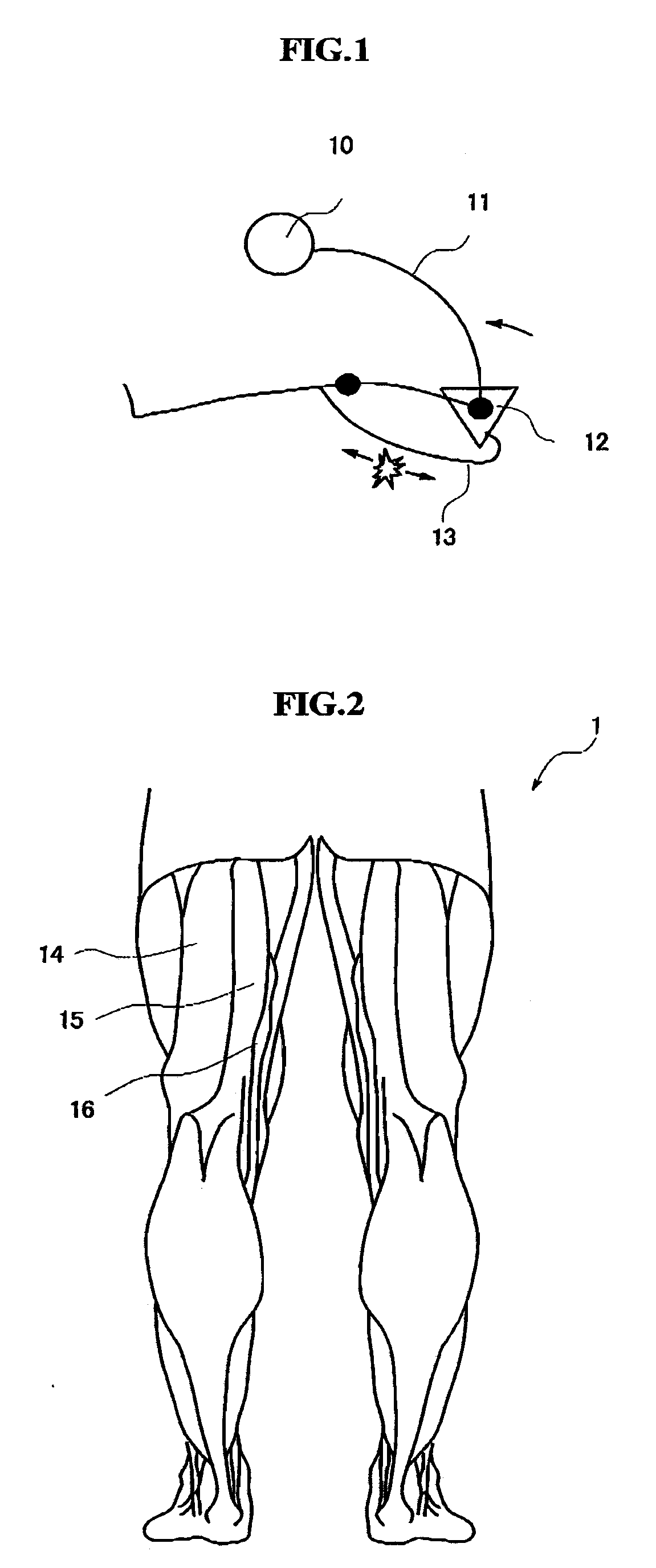Bed for allowing posture for sitting on chair to be taken
a technology for a bed is applied in the field of beds to allow sitting on a chair posture to be taken, which can solve the problems of inability to use the bed with the knee-lifting function, as it is, and the back of the knee pain is felt, so as to achieve a stable seating position, shorten the length, and stabilize the seat position
- Summary
- Abstract
- Description
- Claims
- Application Information
AI Technical Summary
Benefits of technology
Problems solved by technology
Method used
Image
Examples
Embodiment Construction
[0042]One embodiment of the invention is described hereinafter with reference to the accompanying drawings. It is to be pointed out, however, that the invention is not limited to the present embodiment of the invention.
[0043]FIGS. 6 to 8 each are a schematic illustration showing the present embodiment of the invention, out of which FIG. 6 is a front view of a bed for allowing a posture for sitting on a chair to be taken, according to the invention, FIG. 7 is a top plan view thereof, and FIG. 8 is a bottom view thereof.
[0044]The bed according to the invention comprises a bed base 2, a fixed floor frame 3 provided in an upper part of the bed base 2, a seat floor section 4, a back rest floor section 5, and a leg floor section 6, as broadly classified, and one piece of mattress 80 is placed over the seat floor section 4, and the back rest floor section 5 while one piece of mattress 81 is placed over the leg floor section 6.
(the bed base 2 and the fixed floor frame 3)
[0045]The bed base 2...
PUM
 Login to View More
Login to View More Abstract
Description
Claims
Application Information
 Login to View More
Login to View More - R&D
- Intellectual Property
- Life Sciences
- Materials
- Tech Scout
- Unparalleled Data Quality
- Higher Quality Content
- 60% Fewer Hallucinations
Browse by: Latest US Patents, China's latest patents, Technical Efficacy Thesaurus, Application Domain, Technology Topic, Popular Technical Reports.
© 2025 PatSnap. All rights reserved.Legal|Privacy policy|Modern Slavery Act Transparency Statement|Sitemap|About US| Contact US: help@patsnap.com



